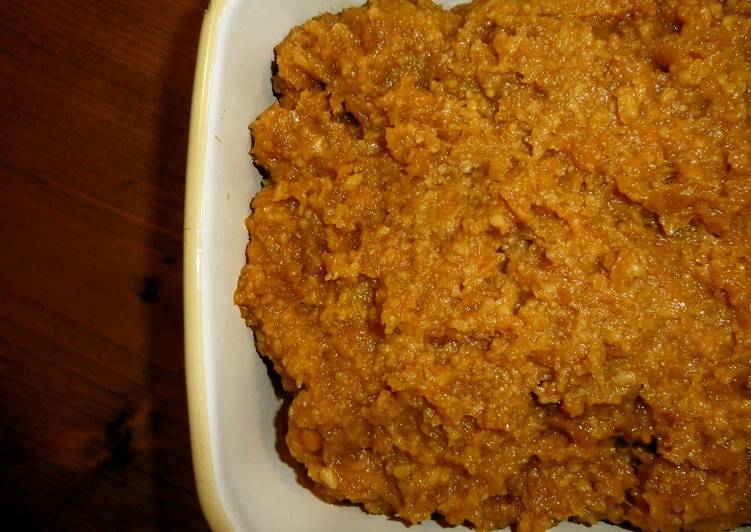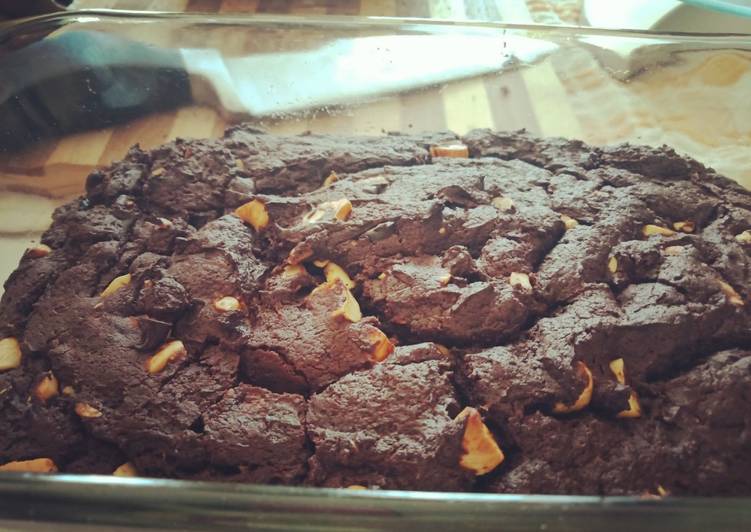Hello everybody, welcome to my recipe site, if you're looking for Homemade Miso Using a Pressure Cooker recipe, look no further! We provide you only the perfect Homemade Miso Using a Pressure Cooker recipe here. We also have wide variety of recipes to try.

Before you jump to Homemade Miso Using a Pressure Cooker recipe, you may want to read this short interesting healthy tips about Easy Ways to Get Healthy.
You already know that, to achieve true health, your diet needs to be balanced and wholesome and you need to get a good amount of exercise. The unfortunate thing is that, at the end of the day, we don’t always have the time or energy required for a healthy lifestyle. When our work day is complete, most people do not wish to go to the gym. A hot, grease laden burger is usually our food of choice and not a leafy green salad (unless we are vegetarians). The good news is that making healthy decisions doesn’t have to be a chore. With training you can get all of the nutrients and the exercise that you need. Here are some hints to be as healthy as possible.
Select water over other refreshments. Having a soda or a cup of coffee every occasionally isn’t a horrible idea. Getting most of your hydration from them is a terrible idea. Having water instead of other kinds of drinks is a good way to aid your body in its health and hydration. You’re also cutting hundreds of calories from your diet— without having to be forced to eat terrible tasting diet food. Effective weight loss efforts often depend exclusively on water intake.
There are many things you can pursue to become healthy. Extensive gym visits and directly defined diets are not always the answer. It is the little things you choose day after day that really help you with weight loss and becoming healthy. Being intelligent about the selections you make each day is a start. Getting as much physical exercise as you possibly can is another factor. Don’t overlook that health isn’t only about simply how much you weigh. It is more about making your body as sturdy as it can be.
We hope you got insight from reading it, now let’s go back to homemade miso using a pressure cooker recipe. To make homemade miso using a pressure cooker you need 3 ingredients and 22 steps. Here is how you achieve it.
The ingredients needed to prepare Homemade Miso Using a Pressure Cooker:
- You need 2 3/5 kg Fresh rice malt (nama koji)
- Get 1 3/5 kg Soy beans
- Use 800 grams Salt
Instructions to make Homemade Miso Using a Pressure Cooker:
- Rinse the soy beans, and soak them in plenty of water overnight. They will swell up to twice their size by the next day.
- Put the soy beans into twice their volume of water in a pressure cooker and bring to a boil. Skim off the white scum that rises to the surface.
- Put the perforated metal plate that comes with the pressure cooker on top. Lock the lid on and cook under pressure for 10 minutes, then leave to cool down naturally. *If you have a small pressure cooker, cook the soy beans in 2 batches.
- This is the fresh rice koji I ordered by mail and used this time. There are 2 bags containing 1.3 kg each. You can use dried rice koji instead!
- While the soy beans are cooking, mix the koji and salt together.
- Drain the cooking liquid from the cooked soy beans, and hold onto it to use later. *If you're cooking the soy beans in several batches, just keep the cooking liquid from the final batch.
- Let the soy beans cool a bit, and put them in a plastic bag. They'll be hot so wrap the bag in a towel and press down with your hands to mash them. The beans are very soft so this should be easy.
- Add the combined koji and salt from Step 5 to the mashed soy beans and mix well. Mix in some of the cooking liquid until the paste is about the consistency of hamburger mixture or about as soft as your earlobe.
- Line a large container or tub with a double layer of plastic bags. Roll the paste into apple sized balls (these are called miso balls) and throw them hard into the container. Press them in firmly to eliminate any air pockets.
- When all the miso balls have been put into the container, press down hard on the whole mass again while putting your weight into it to remove any air. Sprinkle a handful of salt on top evenly. (This is to prevent the surface from developing mold.)
- Squeeze the inner plastic bag closed while pushing out any air inside. Press a small lid or plate on top, add a weight on top of that and wrap and close the outer plastic bag over all. Cover with a lid.
- Wrap the whole container with another plastic bag. Leave it in a dark, cool place out of the sun.
- Here's the schedule from this point on:
- Mixing up from the bottom (1st time): Check on the miso after about 2 months to see if it has developed any mold! If it has, just remove the parts with the mold. Mix the whole thing up from the bottom after removing the moldy parts.
- Mixing up from the bottom (2nd time): Open up the miso 4 months after the first time you mixed it up! Mix it up from the bottom again.
- If the miso has matured enough when you mix it up the 2nd time you can start eating it, but it will become more delicious if you let it mature for a while longer.
- I made miso this time on February 3rd, the day of spring (Setsubun no Hi). I'm looking forward to how it will turn out.
- April 30th: The first mixing up! It's about 3 months after I made the miso. I opened the lid slowly since I was afraid it had developed mold.
- Looks so good! It's fluffy, and actually starting to smell like miso! It hadn't molded at all as I'd feared, and it's turned into miso. It's not yet edible at this point, though.
- I mixed it up from the bottom. To do this I took the plastic bag out and squeezed the miso over the bag. This way my hands are not in direct contact with the miso, so no bacteria gets into it.
- I returned the plastic bag to the container, and levelled out the surface with a wooden spatula. I closed up the plastic bags again as described above. I left it in a cool, dark place. I'll check on it again in September…maybe it will be ready to eat by then…
- End of August: It's matured into a delicious looking miso. It's ready to eat at this point. The top photo is of the miso at this stage.
If you find this Homemade Miso Using a Pressure Cooker recipe helpful please share it to your good friends or family, thank you and good luck.

